Teacher's Well-being - It Starts Within
Marta Bujakowska is a freelance teacher and teacher trainer from Poland with a strong solid intercultural focus. In her long career, she has taught students of all ages and levels. Nowadays she trains teachers and also works with teenagers and adult learners of English. She believes that teachers should feel their self-development is insatiable. Email: marta.bujakowska@gmail.com

Teacher's well-being
It is essential to do something for ourselves, for our well-being when we can activate both our body and mind. To help you achieve that, I would like to offer SuperBrain Yoga, and some finger and nut exercises. They are excellent for teachers to be done at home but even better to be practised with students, either at school or online. Once students practice it with the teacher’s monitoring, they can easily do it on their own.
SuperBrain Yoga warm-up exercise
In my search for some tools to support teachers not only methodologically but also in a more general way backing up their well-being I came across SuperBrain Yoga some years ago. I have been using it myself ever since as well as sharing it with teachers. It is best to be used on its own or as a warm-up before any physical or mental gym/exercise.
SuperBrain Yoga is an ancient Indian technique of increasing brain power through an exercise synchronised by breathing. It is a scientifically validated method that may help to enhance your mental sharpness and clarity. It is simple and easy to do Scientific studies on SuperBrain Yoga show dramatic improvements in children diagnosed with autism, ADD, ADHD and Down syndrome. SuperBrain Yoga can be a part of an effective routine to help people with dyslexia, or other development challenges as well as people suffering from Alzheimer's, poor memory or just the elderly. It can even help those who sometimes feel confused or muddled and those who have a problem with short-term memory.
When used with autistic children and those with ADD and ADHD, regularly for three months SuperBrain Yoga improved their mental performance.
In a more general sense the benefits I am talking about comprise of:
- improving emotional intelligence in children and adults,
- increasing the focus or the power of concentration,
- normalising the behaviour patterns of children,
- increasing the memory to retain and recall new information,
- increasing listening skills,
- improving the group dynamics substantially.
Here is the instruction for you to follow:
Stand up straight in a quiet place.
- Stand up straight, lift your head and back upward slightly. Lengthen your torso, front, back, and spine, keep your head straight up like you wanted to touch the sky with its top. Keep your shoulders wide and open your chest. Keep your feet flat on the ground.
- Place your tongue on the roof of your mouth just behind your teeth. Keep your tongue there for the duration of the whole exercise.
- Touch your right earlobe with your left hand and your left earlobe with your right hand. Use your thumb and forefinger to hold your earlobes; your thumb should be in front. Press on your earlobes.
- Bend your knees to lower your body towards the ground. Try to keep your back straight, don't slouch As you do so, inhale through your nose. Then, lift your body to the initial position as you exhale.
- After doing one squat, repeat the exercise 15 to 21 or more times. Keep your back straight and your tongue on the roof of your mouth all the time.
- You can then change the hold of your hands i.e. touch your left earlobe with your right hand and your right earlobe with your left hand. In this way, you cross your left arm crosses over your right arm. Repeat the exercise.
If you decide that you want to engage yourself in this practice regularly, it's important to have the space to practice. Find a quiet place in your home free from distractions, such as your bedroom, a living room without a television or if the weather permits a balcony, terrace or garden. It's good to have a lot of light, especially the sunlight.
Finger exercises
To help with the tiredness and monotony of online teaching I suggest finger exercises which may be used anywhere and anytime, with students or without, in face-to-face or online teaching.
These exercises for the brain were developed by Joshi Rose Tsutsumi, a Japanese researcher and author of the book 'Finger Self-massage'. He says that if you repeat this short finger workout daily, the stimulation travelling from your fingers directly to your brain will help to rejuvenate your body and make your brain more efficient.
Six finger exercises are meant to strengthen your mind but 'a side-effect' could be physically exercising your hands and helping them to stay agile and healthy. They improve your memory, sharpen your attention, help you focus and boost your brain health in general.
Each fingertip has more than 3000 mechanoreceptors that act as a highway to your brain particularly its sensory cortex. When you do a finger workout you improve synapse connections and fire neurons which is great for the functioning of your brain. As with any proper workout, it is good to do some warm-up before, like SuperBrain Yoga. The order of this set of six finger exercises, however, is laid out in a way to be self-contained and the first exercises can be treated as a warm-up.
Exercise 1
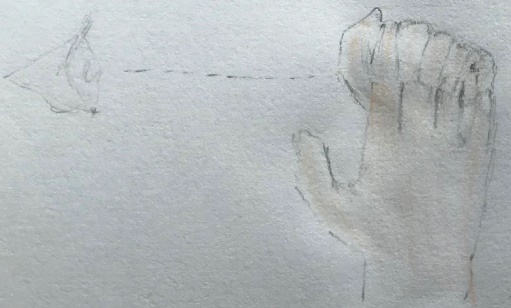
- inhale deeply through your nose
- bend your elbows and lift your fingers to eye level,
- keep palms facing each other, fingers touch
- breathe out through your mouth,
- lower your right hand,
- bend fingers of the left hand and cover the fingers of your right hand as if you're trying to catch a hand that's sliding down
- repeat the other way around
- repeat 15 times, breathing a little faster than usual
- do the exercise smoothly and do not hurry
- do not lower your hands
- coordinate your movements with breathing as always when you do any physical exercise
Exercise 2
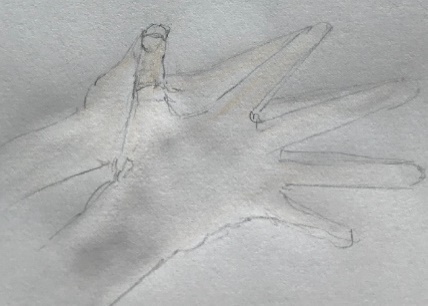
- hold your hands in front of your chest your palms should be facing each other and touching, your wrists should be pressed together as well do not strain, you should feel comfortable
- breathe in and out several times as you normally do
- quickly separate your right and left wrists and palms
- simultaneously spread your fingers wide, only the tips touching
- bring your palms back together and take a quick breath through your mouth, your fingers still splayed out
- separate your palms, only your fingertips touching breathing out at the same time while pressing your fingertips together
- turn your wrists so that your middle fingers are directed away from your chest
- repeat the same movements in this position at least 10 times
- your breathing should be rhythmical and your fingers should be spread as much as possible
Exercise 3
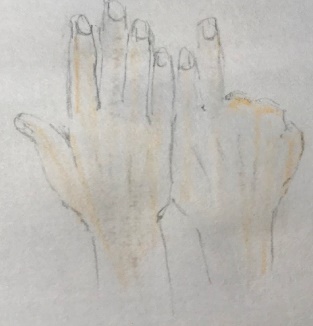
- breathing in and out rhythmically and normally, lift your arms bent at the elbows to your mouth, your palms facing you and your pinky fingers touching
- exhale completely and retain for some seconds
- inhale through your nose, bending all your fingers one by one: start with the thumb on your right hand and finish with the thumb on your left hand
- exhale through your mouth and straighten all your fingers
- now start with the thumb on the left hand
- repeat these movements at least 10 times
- bend and straighten each finger thoroughly and completely
Exercise 4
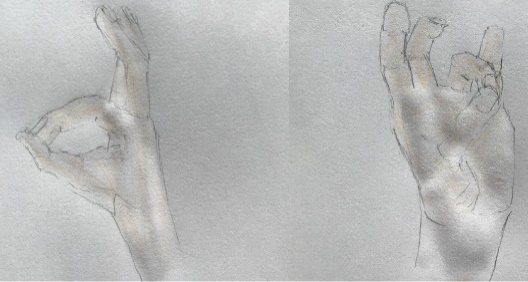
- tightly press together the fingertips of your thumb and index finger on your right hand, slightly curving your index finger
- repeat the same movement with the other fingers
- repeat this exercise 20 times for both hands
- simultaneously start with the index finger on your right hand and the little finger on the left
- go as fast as you can in opposite directions
Exercise 5

- with the fingertip of the thumb on your right hand press down on the bottom of your
right index finger keeping your index finger as straight as possible
- repeat with the other fingers
- apply effort to do this exercise
- repeat this 20 times for both hands
Exercise 6
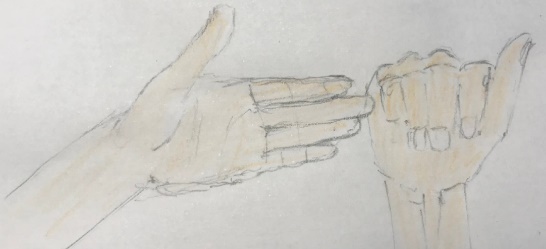
- hold your left hand in a loose fist and the fingers on your right hand straight and
gathered together
- bring the tips of the fingers on your right hand toward the bottom of the pinky on your left hand
- switch your hands
- repeat these movements for each hand in turns as quickly and precisely as you can at least 10 times for both hands
- breathe out through your mouth every time you switch hands
Nut exercises
As a follow-up or a separate exercise for your wellbeing I suggest two nut exercises. They massage your hands and use all acupressure points in the palms. They help you focus as it is not easy for beginners to do them correctly. For this exercise, you'll need four walnuts. You can replace walnuts with any other nuts or hard balls big enough to assist you.
Nut exercise one
- take a walnut and start to roll it around your left palm while pressing on it with your right palm with some effort
- keep doing this for at least one minute
- turn your left hand up and start to roll the nut around your right hand pressing on it with your left hand
- again keep doing it for one minute
Nut exercise two
- take two walnuts in each hand and start to roll them by using circular motions in your right hand clockwise and in your left hand counter clockwise
- do it for at least one minute
Both exercises work like acupressure massaging different receptors on our palms.
Our brain ages, our memory, attention span and concentration weaken. Luckily,
this finger workout can help us deal with these problems. And it can prevent the ageing of our fingers too! Enjoy the finger gym!
Give yourself an occasional break. All of the exercises suggested here should ideally be relaxing. If you find yourself stressing out about your SuperBrain Yoga or finger exercises, take a day off. The exercises should make you feel better mentally and also physically.
Note
All drawings are by the author’s daughter Zosia Przybyło
References
Master Choa Kok Sui, (March 2005) SuperBrain Yoga, Institute for Inner Studies Publishing Foundation
Tsutsumi, J, (March 3, 2015) Finger self-massage, Starting from scratch (Russian Edition), Book on Demand Ltd.
https://blog.mindvalley.com/superbrain-yoga/
https://www.wikihow.life/do-superbrain-yoga
Please check the The Art and Skills of the Humanistic Teacher Trainer course at Pilgrims website.
Teacher's Well-being - It Starts Within
Marta Bujakowska, PolandWhat Motivates EFL Teachers to Pursue Professional Development Beyond Initial Teacher Training?
Christopher Walker, Poland